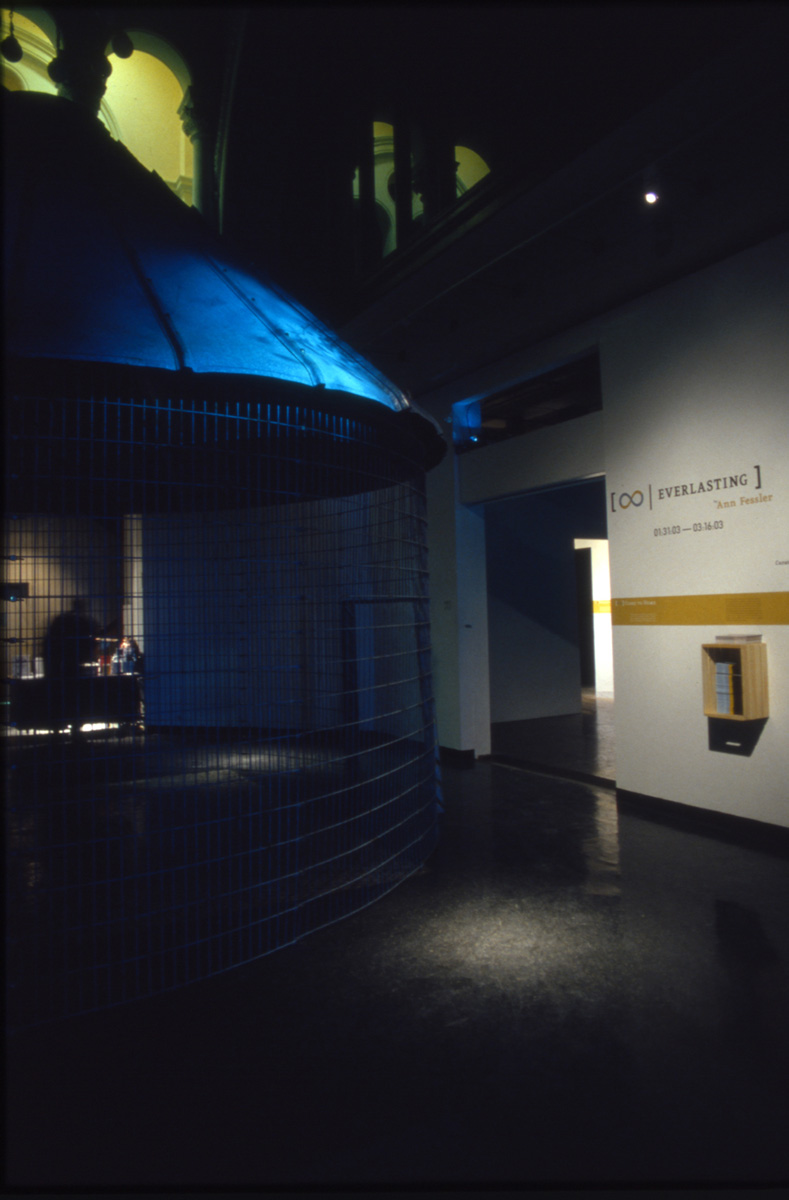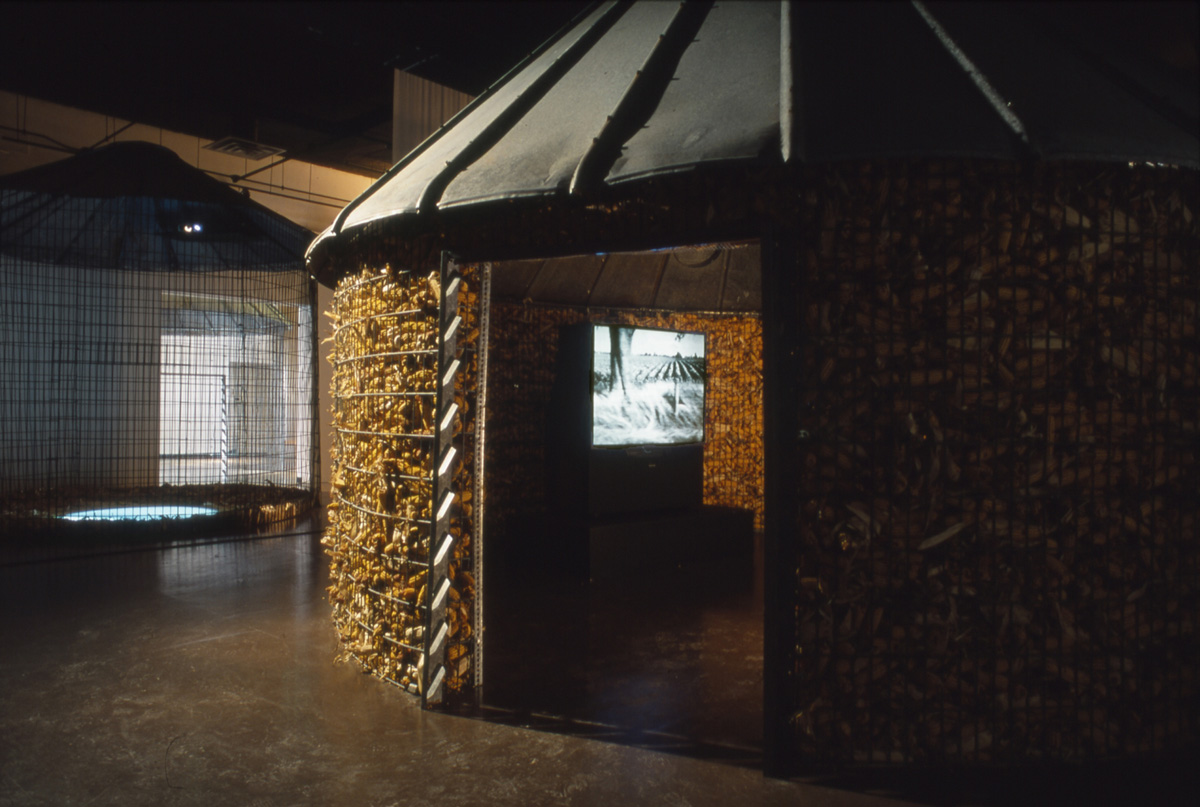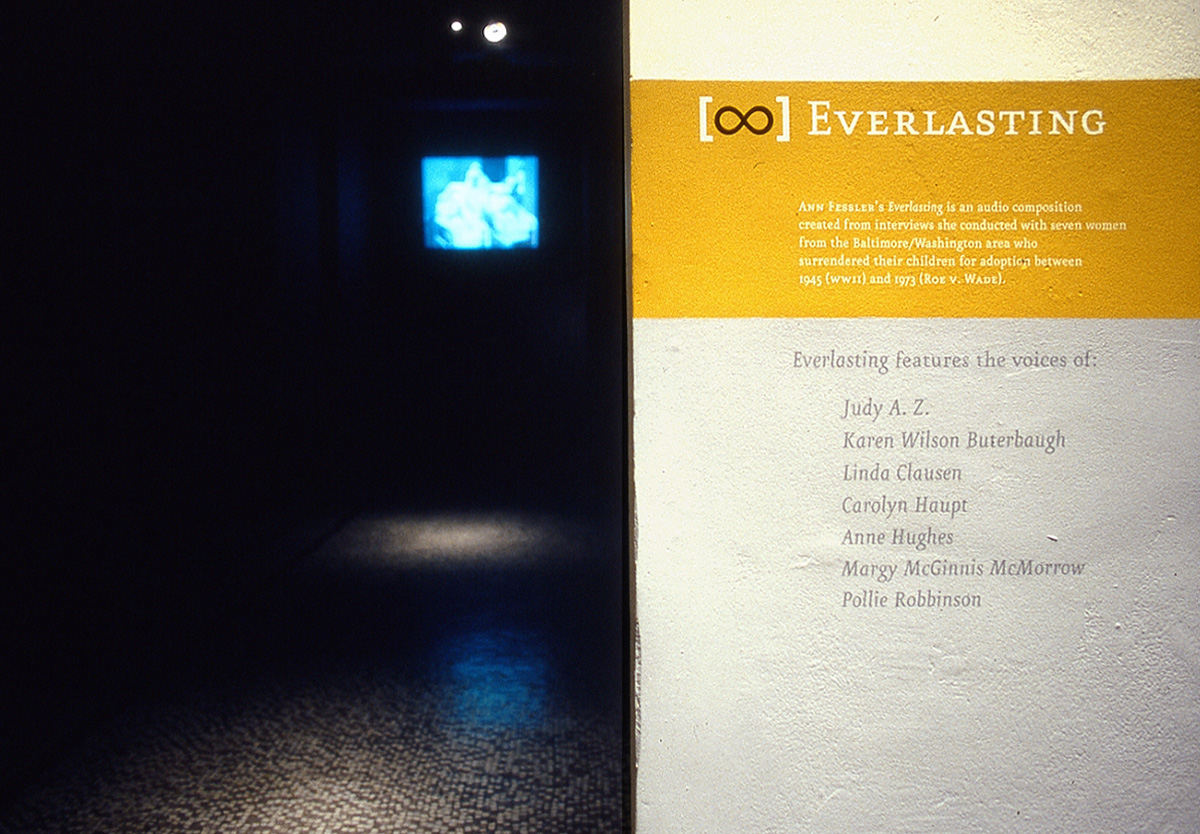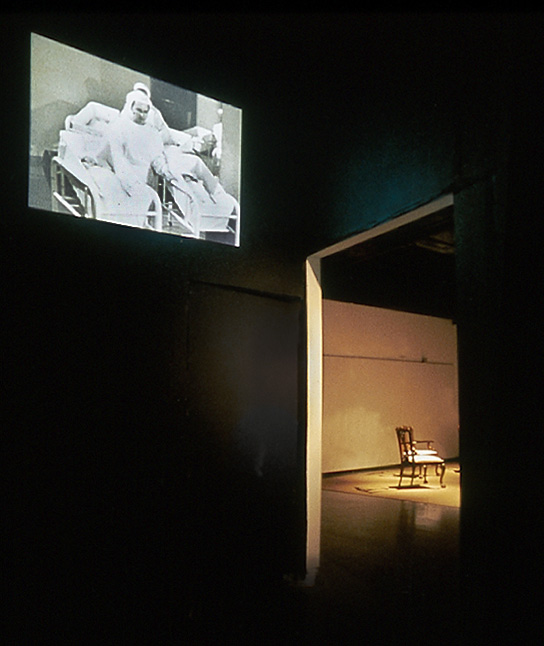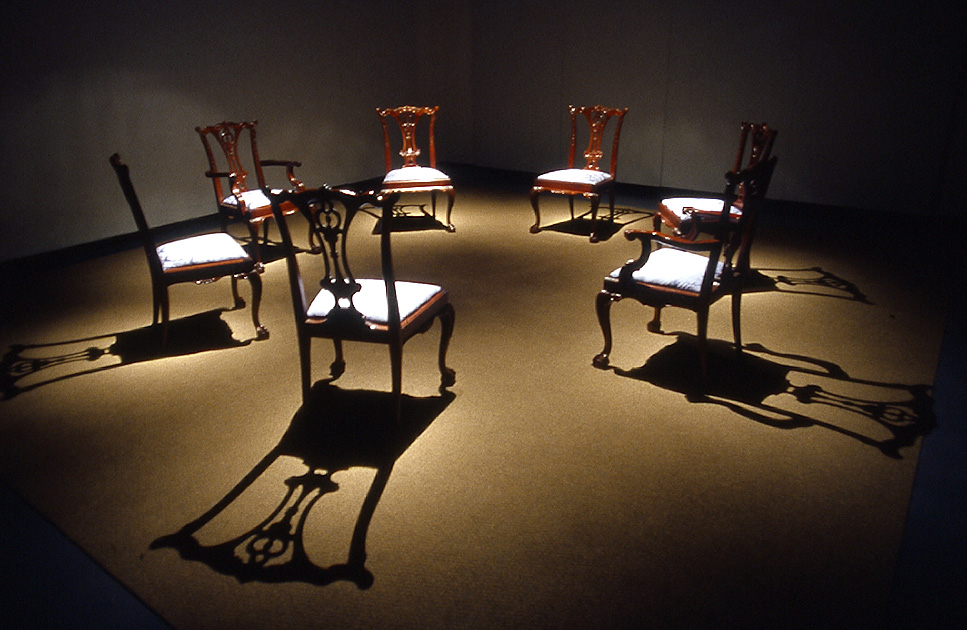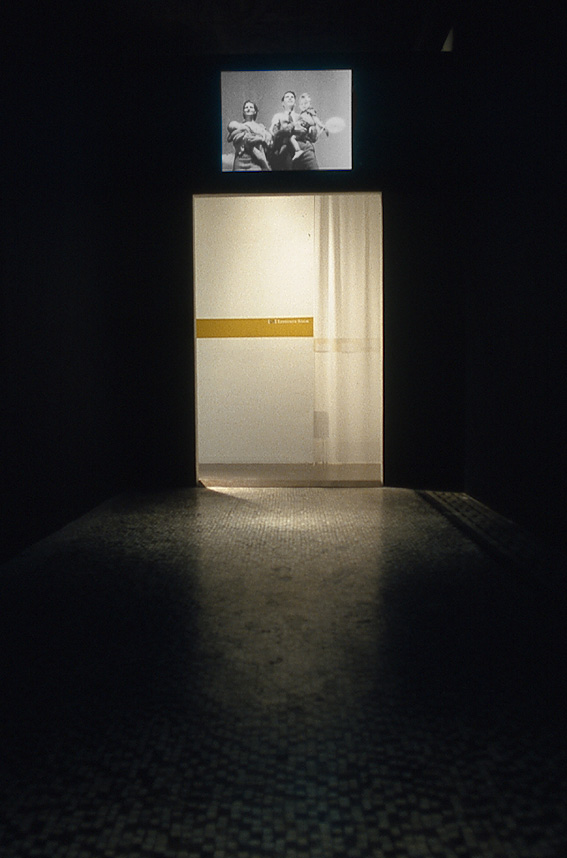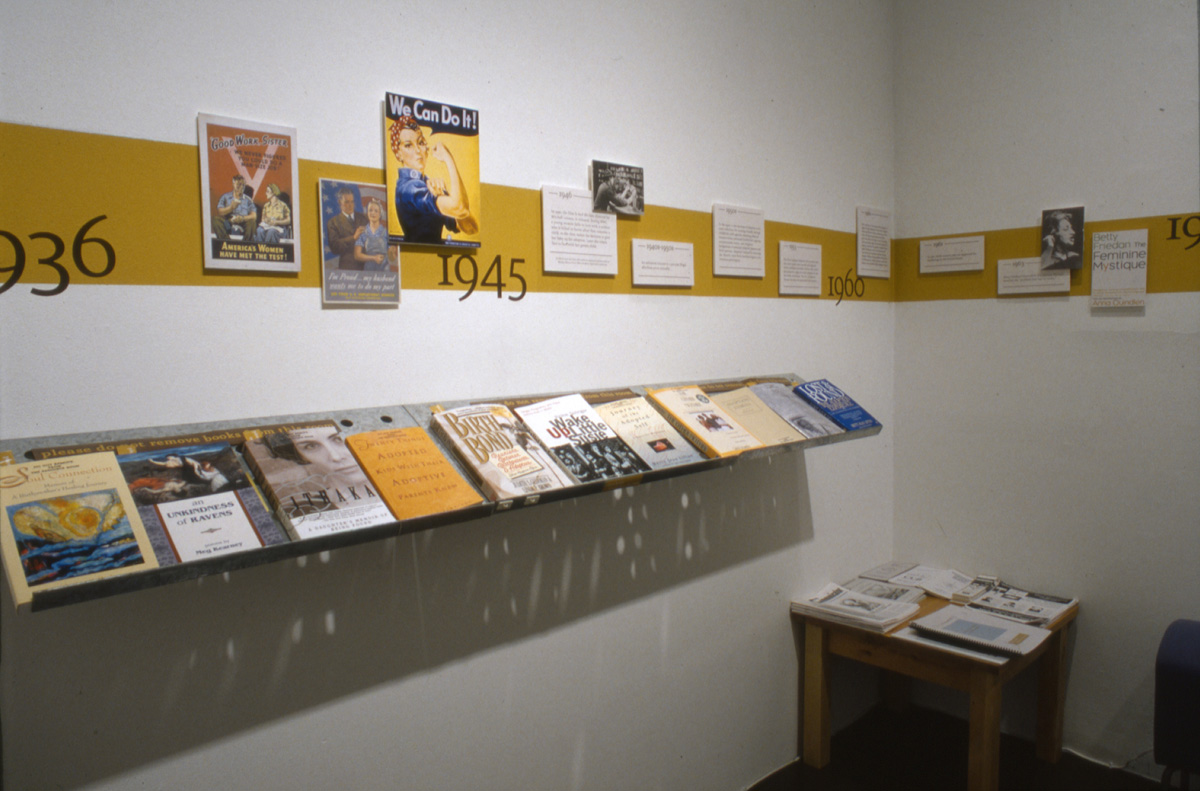Description
In the Everlasting: Baltimore, 2003, installation viewers first encounter an enormous corncrib that fills the darkened two-story atrium of a building that was formerly a train station but now serves as entry to the Decker Gallery at the Maryland Institute College of Art. A video projection on the roof of the corncrib gives the appearance of sunlight filtering through the branches of a tree, causing the shadows of leaves to flicker on the metal surface. Sounds of a farm on a summer day draw viewers into the main gallery where they experience an expanded version of Fessler’s 2001 Close to Home installation.
Viewers then enter a long, dark corridor, illuminated by a video loop depicting a never-ending stream of newborn babies being wheeled by nurses though a hospital doorway. As they move towards the video they discover at the end of the corridor a large room with a circle of chairs and an invitation to sit and listen to the surround-sound audio composition created by Fessler from oral history interviews she conducted with seven women from the Baltimore/Washington area. The five-channel audio piece, structured like a musical score, emanates from five separate speakers hidden on the perimeter of the room. The audio piece sounds at times like a conversation, and at other times like a cacophony of voices that raise the emotional and auditory pitch to a level that drowns out individual experiences. This chorus of voices represents more than a million and a half women who found themselves in similar circumstances in the 1950s, 60s, and early 70s.
What is public or private, visible or invisible is addressed metaphorically through the use of lighting. As viewers sit in the chairs they have the option to sit forward, which makes their faces visible to others in the circle, or lean back which makes their faces fall into the shadow and disappear. The audio composition, composed from the oral histories Fessler conducted with women who either lived in, or lived out their pregnancies in, the Baltimore/Washington area, reveals both the specifics of individual experiences and the collective experience of women who found themselves single and pregnant during this era.
As audience members leave the sound installation and re-enter the corridor, they discover a second video projection above the doorway they first entered. The video loop, which depicts an idealized 1950s family, has been reversed so the family walks backwards, away from the viewer, with their child and baby. Fessler also altered a close-up from the original footage that depicted the father throwing his son above his head, so the father appears to be pulling the little boy out of the air and into his family.
As viewers exit the hallway, they discover a Resource Room that provides historical context, handouts, a timeline, and research conducted by a team of students, as well as further readings and films suggested by the women featured in the exhibition.
Information
Everlasting: Baltimore, installation by Ann Fessler, 2003
Medium: Site-specific surround-sound audio composition created from interviews with 7 women from the Baltimore/Washington area; 7 chairs; 2 video projections; and an expanded version of Fessler’s Close to Home, installation, 2001.
Everlasting: Baltimore was the first audio installation created by Fessler from oral history interviews she conducted with mothers who lost children for adoption. It premiered at the Maryland Institute College of Art in Baltimore in January of 2003, and included an expanded version of her previous 2001 Close to Home installation, thereby pairing the story of Fessler’s search for her mother with the stories of mothers who lost children to adoption.
The exhibition was developed through a year-long artist residency under the direction of George Ciscle, the Curator in Residence at MICA, and developer of the Exhibition Development Seminar. The seminar, taught at night so both MICA students and members of the community could enroll, included more than thirty participants who worked in teams lead by professional mentors with expertise in communications, public relations, research, exhibition design, lighting design, website and catalog design, educational outreach, and public programming. Fessler traveled to Baltimore monthly to conduct oral history interviews, and meet with individual teams and the class as a whole.
Outreach and programming organized in connection with the exhibition included a film series, with discussions after each screening led by a different professor from MICA, and a lecture series that included a public discussion with Fessler, Rickie Solinger, and the women who were featured in the exhibition. Local collaborators included a nearby senior center and teachers from area colleges and high schools that participated in a one-day workshop in curriculum development designed around themes from the exhibition. High school teachers from the McDonogh school, a private school in Baltimore County situated on the grounds of a former orphanage, were involved with the exhibition in the early development stages. Seven teachers developed curricula around the exhibition and subsequently presented work by their students at the faculty workshop. Fessler also installed a satellite exhibition at the McDonogh Tuttle Gallery and spoke at the school.
A thirty-two page catalog created by the Publications Design Team and their professional mentor from Pentagram Design was available free of charge at the exhibition. It included essays about Fessler, the content of the exhibition, and the Exhibition Development Seminar. The catalog is available below as a downloadable pdf.
Exhibition Catalog
View the Everlasting: Baltimore installation catalog » (PDF)


